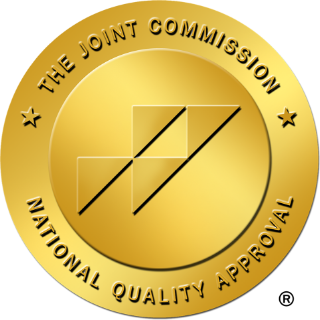Crack cocaine is one of the most powerful and dangerous illegal drugs. This highly addictive form of cocaine creates intense, short-lived highs that can hook users from their very first experience. The drug’s rapid onset and powerful effects make it particularly challenging to resist, leading many individuals down a destructive path of addiction.
Understanding crack cocaine addiction is crucial for both those struggling with substance use and their support network. The drug’s grip affects not just the individual but also families, friendships, and entire communities. Knowledge about crack cocaine – its effects, risks, and available treatment options – serves as a vital tool in:
- Recognizing early warning signs of use
- Understanding the severity of addiction
- Making informed decisions about seeking help
- Supporting loved ones through recovery
This comprehensive guide sheds light on the nature of crack cocaine, its impact on the body, and the path toward recovery for those affected by its use.
Understanding the Origins and Effects of Crack Cocaine
The Journey of Crack Cocaine
Crack cocaine begins its journey in the fields of South America, where farmers cultivate coca plants (Erythroxylum coca). These plants contain cocaine alkaloids in their leaves, which undergo extensive processing to create powder cocaine. The transformation from powder to crack cocaine happens through a chemical reaction with baking soda or ammonia, creating solid “rocks” that produce a distinctive crackling sound when heated.
How Crack Cocaine Affects the Brain
The chemical structure of crack cocaine allows it to cross the blood-brain barrier rapidly, creating intense effects within seconds. This quick-acting nature stems from its altered molecular form, making it more potent than powder cocaine.
Inside the brain, crack cocaine triggers a surge of natural chemicals:
- Dopamine floods the brain’s reward centers, creating intense pleasure and euphoria. This is due to the drug’s ability to significantly increase dopamine levels, which is often associated with feelings of pleasure.
- Glutamate activation enhances learning and memory formation
- Norepinephrine increases, leading to heightened alertness and energy
These neurotransmitter changes create a powerful cycle:
- The brain’s reward system becomes rewired
- Natural pleasure responses diminish
- Tolerance develops, requiring higher doses
- Physical dependence takes hold
The brain adapts to these chemical disruptions by reducing its natural neurotransmitter production, making it increasingly difficult for users to experience pleasure without the drug. This neurological hijacking explains why crack cocaine creates such powerful addictive patterns in the brain’s reward system.
Manufacturing and Methods of Using Crack Cocaine
Crack cocaine emerges through a chemical process that transforms powdered cocaine into a solid, crystalline form. This transformation occurs when cocaine hydrochloride is mixed with baking soda (sodium bicarbonate) or ammonia, then heated. The resulting “rocks” create the distinctive crackling sound when heated – giving the drug its street name.
How Crack Cocaine is Made
The manufacturing process creates a substance that’s:
- More concentrated than powder cocaine
- Faster-acting due to its altered chemical structure
- Highly potent with immediate effects
Common Ways People Use Crack Cocaine
Users typically consume crack cocaine through several methods:
- Smoking: The most common method involves heating the crystals in a glass pipe, allowing users to inhale the vapors.
- Hot rail: Heating a glass tube and snorting the resulting smoke.
- Injection: Dissolving the substance in water or another liquid.
Why Smoking is So Dangerous
The smoking method delivers the drug directly to the lungs, creating an intense high within 10-15 seconds. This rapid delivery system makes crack cocaine particularly dangerous, as it:
- Intensifies the addictive potential
- Creates a stronger euphoric effect
- Leads to more frequent use patterns
- Increases risk of overdose
The quick onset and intense effects drive users to seek repeated doses, creating a dangerous cycle of use and dependency. Moreover, the effects of smoking on the body can be devastating, leading to severe health issues beyond addiction.
Immediate and Long-Term Effects of Crack Cocaine on Health
The effects of crack cocaine on the body begin within seconds of use, creating both immediate and lasting health impacts.
Immediate Physical Effects:
- Racing heartbeat and elevated blood pressure
- Intense sweating and hyperthermia
- Dilated pupils and sensitivity to light
- Muscle twitches and tremors
- Constricted blood vessels
- Nausea and decreased appetite
Immediate Psychological Effects:
- Extreme euphoria and energy
- Heightened alertness and focus
- Anxiety and paranoia
- Aggressive behavior
- Restlessness and irritability
Long-Term Health Consequences:
- Severe respiratory damage from smoking
- Permanent cardiovascular problems
- Liver and kidney damage
- Memory loss and cognitive decline
- Increased risk of seizures
- Chronic sleep disorders
The brain undergoes significant changes with prolonged crack cocaine use. Users often experience damaged nerve cells, impaired decision-making abilities, and disrupted emotional regulation. The respiratory system suffers extensive damage as toxic chemicals from crack smoke destroy delicate lung tissue, leading to chronic breathing problems and increased susceptibility to respiratory infections.
These health effects intensify with continued use, as the body develops tolerance and requires larger amounts to achieve the same effects, creating a dangerous cycle of escalating use and worsening health consequences.
Recognizing Health Complications Associated with Crack Cocaine Use
Chronic crack cocaine use creates severe risks to physical health beyond its immediate effects. The drug’s impact on the cardiovascular system can trigger:
- Heart attacks
- Irregular heart rhythms
- Blood vessel constriction
- Increased risk of stroke
- Dangerously high blood pressure
The compromised decision-making associated with crack cocaine addiction leads to risky behaviors that increase exposure to infectious diseases. Users face heightened risks of:
- HIV/AIDS through shared drug paraphernalia
- Hepatitis B and C
- Bacterial infections
- Sexually transmitted infections
Crack cocaine’s intense effects on the respiratory system can result in:
- Permanent lung damage
- Chronic bronchitis
- Persistent coughing with blood
- Higher susceptibility to pneumonia
The drug’s caustic nature damages the body’s mucous membranes, creating entry points for infections. This physical deterioration combines with weakened immune system function, making users particularly vulnerable to opportunistic infections.
The risk of overdose rises significantly when crack cocaine is mixed with other substances, particularly opioids or alcohol. These combinations amplify the strain on vital organs and can lead to life-threatening complications.
Withdrawal Symptoms, Treatment Options, and Seeking Help for Crack Cocaine Addiction
Breaking free from crack cocaine addiction requires understanding the challenging withdrawal process and available treatment options. When someone stops using crack cocaine, their body experiences significant physical and psychological symptoms:
Common Withdrawal Symptoms:
- Intense drug cravings
- Severe depression and anxiety
- Extreme fatigue and exhaustion
- Difficulty concentrating
- Irritability and restlessness
- Sleep disturbances
- Physical discomfort
Professional treatment programs offer structured support through these withdrawal symptoms. Medical detoxification provides a safe environment where healthcare professionals monitor vital signs and manage complications. This critical first step paves the way for comprehensive addiction treatment.
Evidence-Based Treatment Approaches:
- Cognitive Behavioral Therapy (CBT) – Helps identify triggers and develop coping strategies
- Contingency Management – Uses reward systems to reinforce positive behaviors
- Group Therapy – Provides peer support and shared recovery experiences
- Individual Counseling – Addresses personal trauma and underlying mental health issues
Medication-assisted treatment may help manage specific withdrawal symptoms and reduce cravings. The combination of medical supervision, behavioral therapies, and ongoing support creates a strong foundation for recovery. Each person’s journey through addiction treatment is unique, requiring a personalized approach that addresses their specific needs and circumstances.
Recognizing Signs and Taking Action Against Crack Cocaine Addiction with Pacific Breeze Recovery’s Support
Breaking free from crack cocaine addiction requires strength, support, and professional guidance. At Pacific Breeze Recovery, we understand the unique challenges individuals face when dealing with crack cocaine dependency.
Our specialized treatment programs include:
- Medical detoxification under expert supervision
- Medication Assisted Treatment (MAT) for addictions
- Individual and group therapy sessions
- Holistic healing approaches
- Dual diagnosis treatment for co-occurring mental health conditions
- Family support and education programs
Located in Southern California, our treatment center provides a safe, nurturing environment where you can focus on your recovery journey. Our experienced medical staff and therapists work together to create personalized treatment plans that address both the physical and psychological aspects of crack cocaine addiction.
Ready to take the first step? Contact Pacific Breeze Recovery today. Our compassionate team is available 24/7 to answer your questions and guide you toward a healthier, drug-free life. Your journey to recovery starts here.





